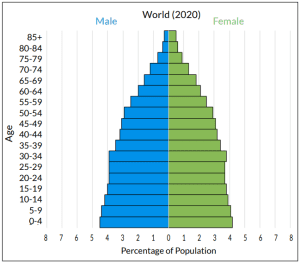Zero population growth (ZPG) is a basic demographic term that is important for students to understand during a population unit. Fortunately, the term’s definition is not too far off from its name!
Zero population growth refers to a population that is unchanging – it is neither growing, nor declining; the growth rate is zero. This demographic balance could occur when the birth rate and death rate are equal. But be careful, because this is not always the case. ZPG also accounts for immigration (when a person migrates to a country) and emigration (when a person leaves their country to settle somewhere new). Therefore, a country that has reached zero population growth has a population where births plus immigration is equal to deaths plus emigration over the course of a year. When considering population growth in the entire world, of course, immigration and emigration do not apply and ZPG would be attained simply when the global birth and death rates are equal.
There are several countries around the world that are at or near ZPG, including Iceland, Germany, Portugal, and Poland. The population stabilization that accompanies ZPG is often seen as a critical component to long-term sustainability for a country, region, or the world.




